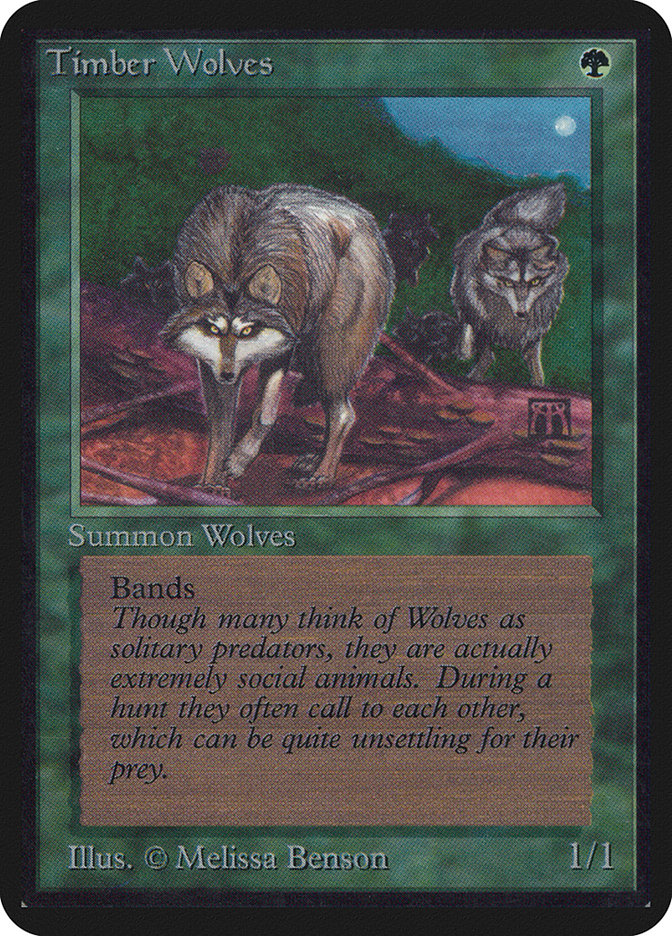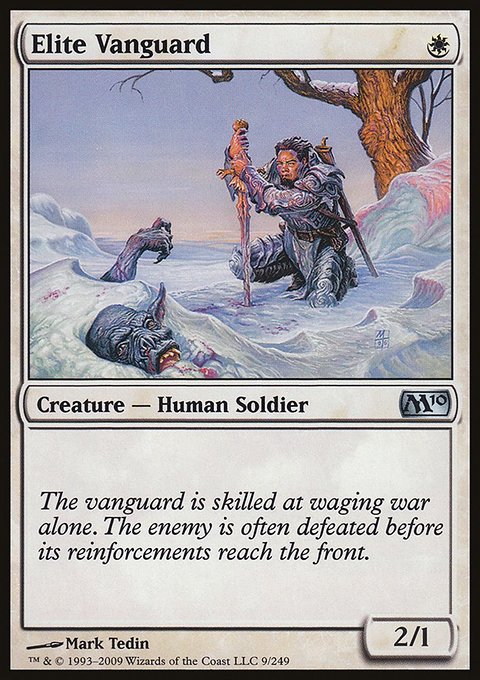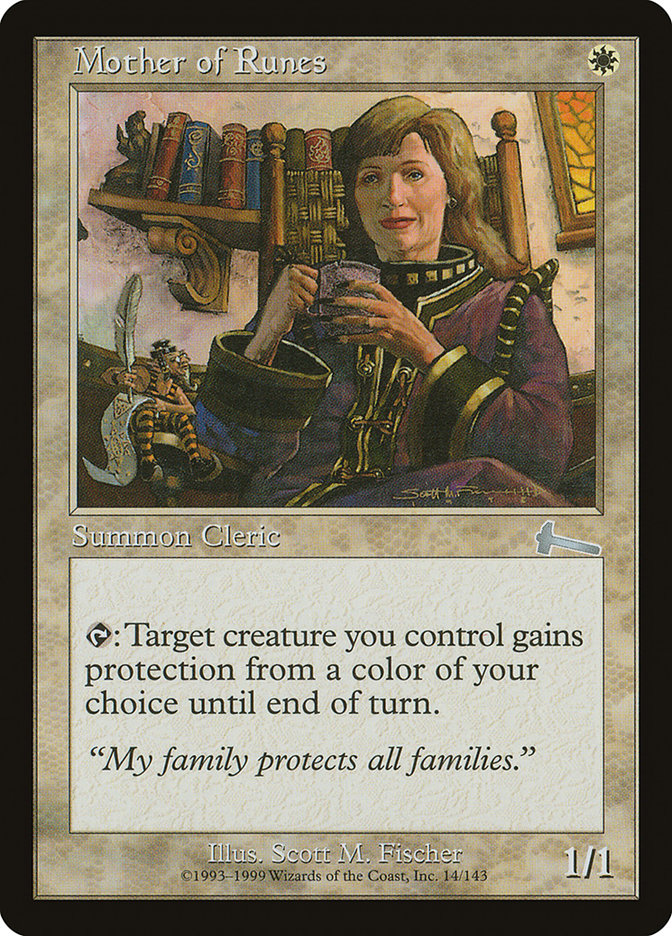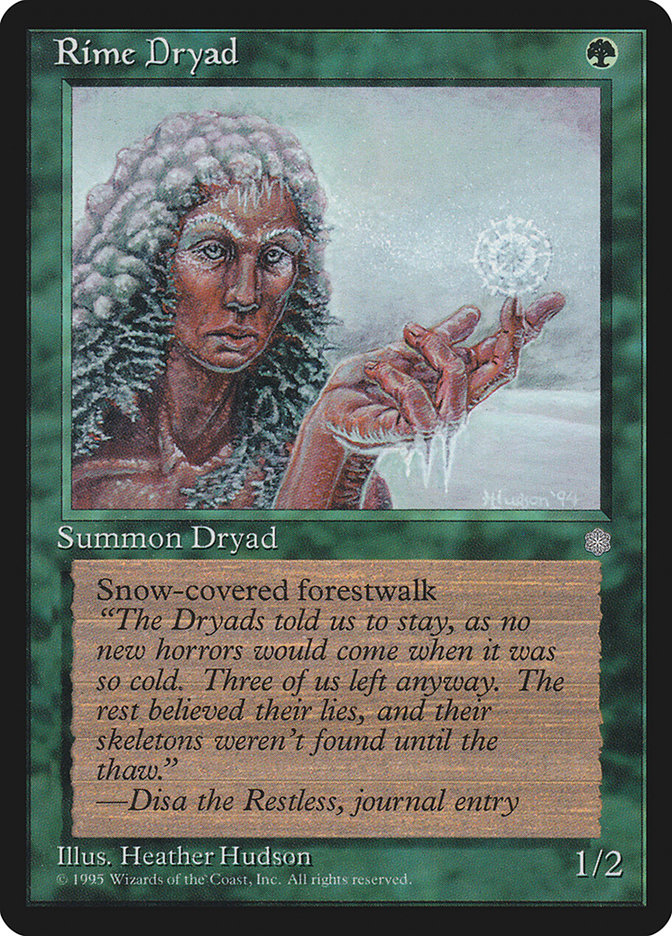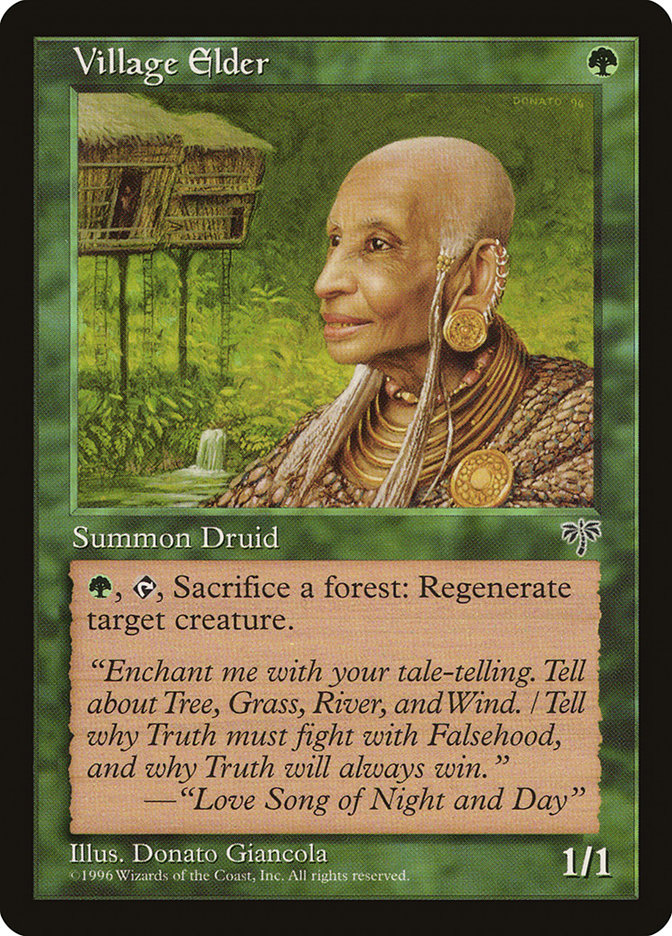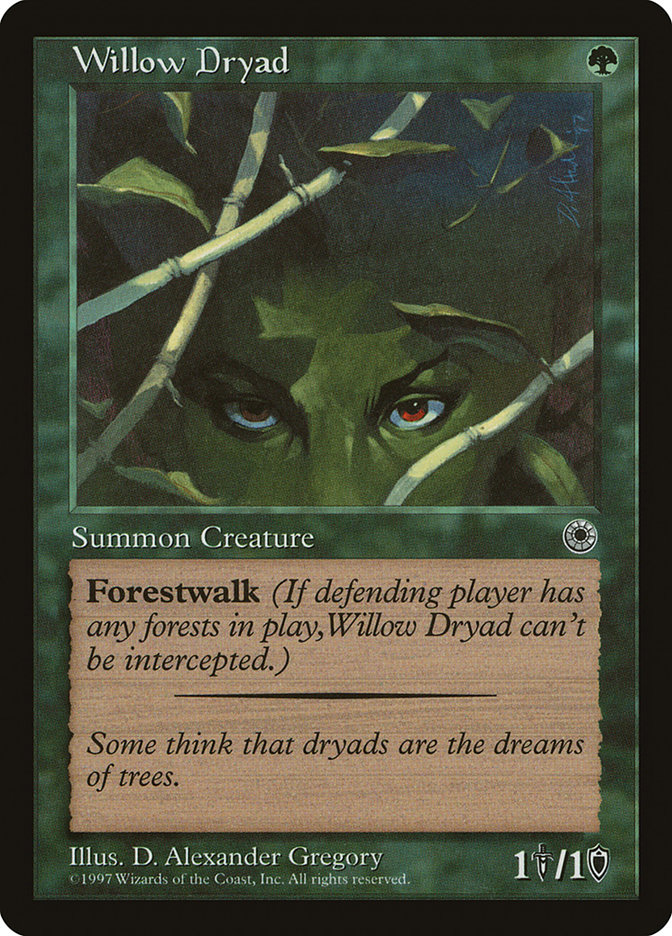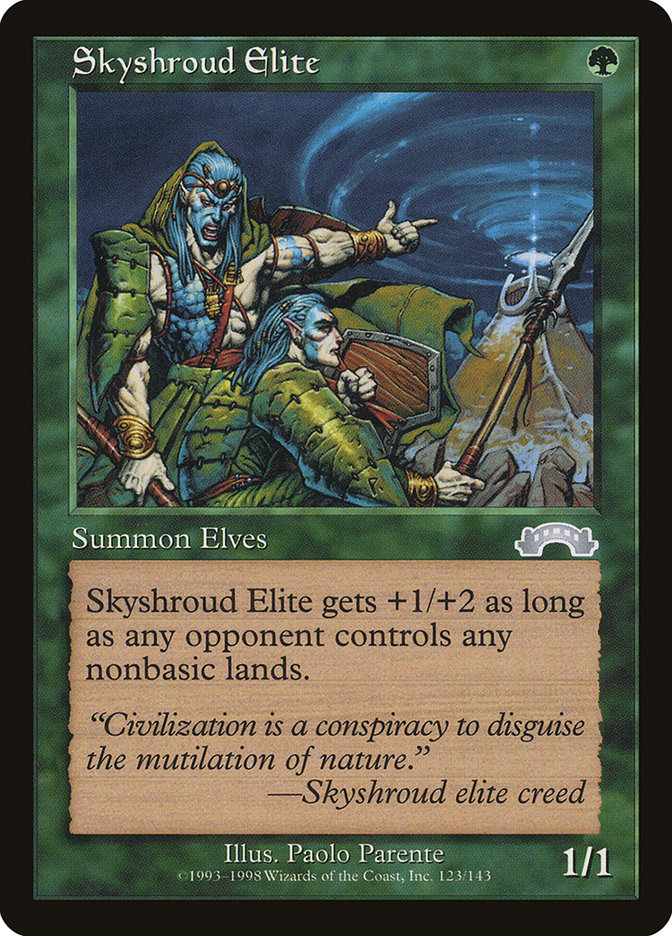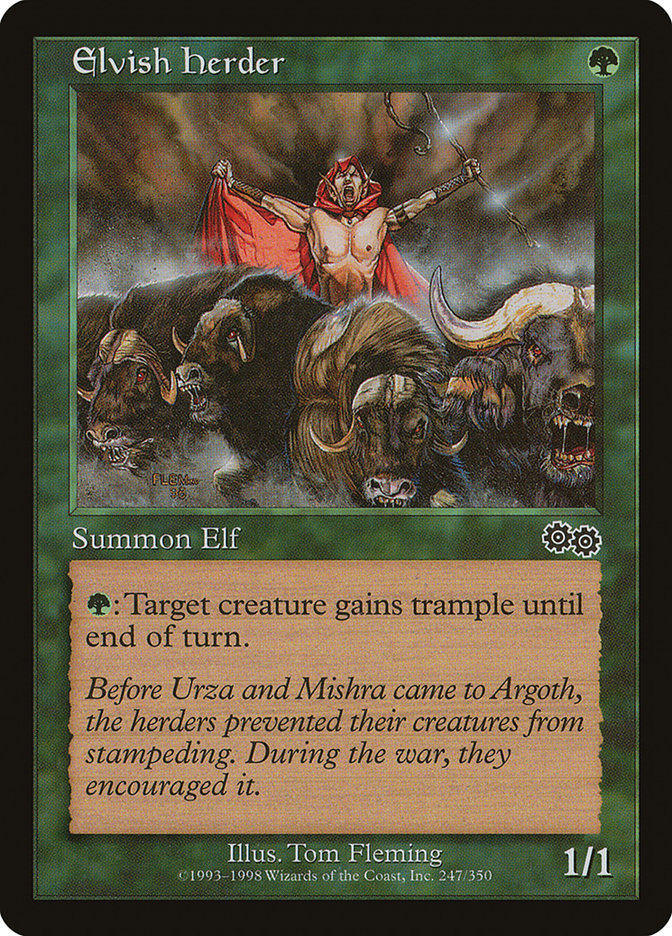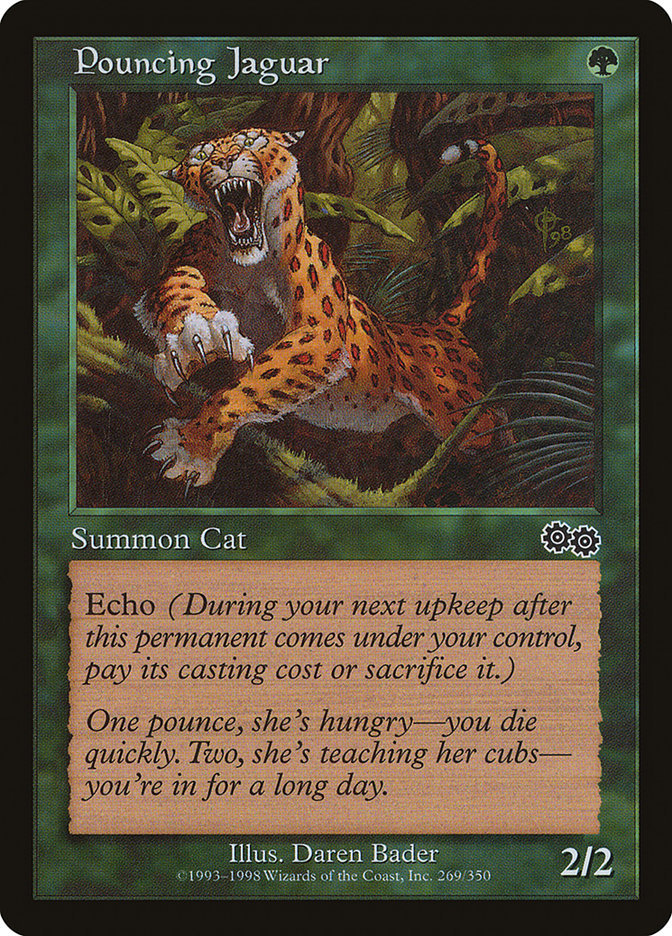Timber Wolves MTG Card
| Card sets | Released in 12 setsSee all |
| Mana cost | |
| Converted mana cost | 1 |
| Rarity | Rare |
| Type | Creature — Wolf |
| Abilities | Banding |
| Power | 1 |
| Toughness | 1 |
Text of card
Bands
Though many think of Wolves as solitary predators, they are actually extremely social animals. During a hunt they often call to each other, which can be quite unsettling for their prey.
Cards like Timber Wolves
Timber Wolves stands as a classic creature in Magic: The Gathering, often paralleled with other early game one-drop creatures. Much like its contemporary, Savannah Lions, this card provides early board presence with its 1/1 stats. Yet, Timber Wolves holds a unique edge with its banding ability, allowing a strategic layer of defense when blocking or a tactical advantage during an attack, not found in the straightforward aggressiveness of Savannah Lions.
Another comparable card is Elite Vanguard, which shares the same cost and power/toughness ratio. However, it lacks any abilities, positioning Timber Wolves as a more versatile choice in decks that can capitalize on banding. This ability is reminiscent of the function of Mother of Runes, which also manipulates combat outcomes, although through protection rather than group tactics.
While players may overlook banding in favor of more immediate impact abilities, within specific strategies or gameplay scenarios, Timber Wolves may indeed find its niche, adding a layer of complexity and options for skilled players. Its ability to alter the dynamics of battle can be invaluable, making it a prudent choice in certain MTG decks focused on intricate combat maneuvers.
Cards similar to Timber Wolves by color, type and mana cost
Card Pros
Card Advantage: Timber Wolves do not directly offer card advantage in the traditional sense as they do not allow you to draw cards. However, the card can be seen as a resourceful addition to a creature-based strategy, enhancing board presence and subsequent attacking and blocking tactics.
Resource Acceleration: This card does not provide mana or resource acceleration. Nevertheless, as a low-cost creature, Timber Wolves can be deployed quickly, potentially accelerating your board state in the early phases of the game when compared to other higher-cost creatures.
Instant Speed: Although Timber Wolves cannot be cast at instant speed, their ‘banding’ ability compensates by offering substantial strategic depth during combat. It allows grouped attacks or defenses, which can tide the scales of battle in your favor when timed well with the combat phase.
Card Cons
Discard Requirement: The Timber Wolves require other cards to unlock their full potential, such as buffs or enchantments, which can diminish your hand size, leaving you vulnerable to hand disruption tactics from opponents.
Specific Mana Cost: Timber Wolves come with a specific green mana cost, which may restrict their integration in multi-colored decks that focus on a different color scheme, potentially limiting their playability across various deck types.
Comparatively High Mana Cost: While not exorbitant, the mana cost for Timber Wolves could be deemed high considering their base attributes and the availability of other creatures with similar or better abilities at a lower mana investment.
Reasons to Include in Your Collection
Versatility: Timber Wolves can adapt to various deck themes, acting as early blockers against aggressive strategies or bolstering your creature forces in creature-centric decks.
Combo Potential: This card dovetails neatly with abilities like ‘banding’ or buffs from ‘anthems’, allowing for flexible and potent combat scenarios that can surprise your opponents.
Meta-Relevance: Considering their low cost and the resurgence of combat-centric decks, Timber Wolves can provide a strategic edge within the current metagame, making them a wise choice for competitive play.
How to beat
Timber Wolves is a classic from the early days of Magic: The Gathering, notable for its “bands with other” ability. At first glance, its 1/1 stats for one green mana might not seem formidable, but Timber Wolves can become troublesome when they are banded together, making them a more resilient force on the battlefield.
To counter this forest-dwelling pack, removal spells are your best friend. Since Timber Wolves have a meager toughness, they fall prey to most damage-based spells like Shock or even mass removal spells like Pyroclasm, which can clear them off the board before they have a chance to band together. If they’ve already formed a band, targeted removal spells like Doom Blade or Path to Exile can break up the pack, handling the situation efficiently without letting the wolves utilize their strength in numbers. Paying attention to combat math is crucial as well, to ensure that no beneficial banding scenarios slip through unchecked.
Whether facing a single Timber Wolf or an assembled pack, understanding the dynamics of their ability and keeping the right answers in hand will ascertain control over these early-game creatures, ensuring they don’t outpace you in the rush of the wild.
Where to buy
If you're looking to purchase Timber Wolves MTG card by a specific set like Limited Edition Alpha and Limited Edition Beta, there are several reliable options to consider. One of the primary sources is your local game store, where you can often find booster packs, individual cards, and preconstructed decks from current and some past sets. They often offer the added benefit of a community where you can trade with other players.
For a broader inventory, particularly of older sets, online marketplaces like TCGPlayer, Card Kingdom and Card Market offer extensive selections and allow you to search for cards from specific sets. Larger e-commerce platforms like eBay and Amazon also have listings from various sellers, which can be a good place to look for sealed product and rare finds.
Additionally, Magic’s official site often has a store locator and retailer lists for finding Wizards of the Coast licensed products. Remember to check for authenticity and the condition of the cards when purchasing, especially from individual sellers on larger marketplaces.
Below is a list of some store websites where you can buy the Timber Wolves and other MTG cards:
 BUY NOW
BUY NOW BurnMana is an official partner of TCGPlayer
- eBay
- Card Kingdom
- Card Market
- Star City Games
- CoolStuffInc
- MTG Mint Card
- Hareruya
- Troll and Toad
- ABU Games
- Card Hoarder Magic Online
- MTGO Traders Magic Online
See MTG Products
Printings
The Timber Wolves Magic the Gathering card was released in 11 different sets between 1993-08-05 and 2022-11-28. Illustrated by Melissa A. Benson.
| # | Released | Name | Code | Symbol | Number | Frame | Layout | Border | Artist |
|---|---|---|---|---|---|---|---|---|---|
| 1 | 1993-08-05 | Limited Edition Alpha | LEA | 219 | 1993 | Normal | Black | Melissa A. Benson | |
| 2 | 1993-10-04 | Limited Edition Beta | LEB | 220 | 1993 | Normal | Black | Melissa A. Benson | |
| 3 | 1993-12-01 | Unlimited Edition | 2ED | 220 | 1993 | Normal | White | Melissa A. Benson | |
| 4 | 1993-12-10 | Intl. Collectors' Edition | CEI | 220 | 1993 | Normal | Black | Melissa A. Benson | |
| 5 | 1993-12-10 | Collectors' Edition | CED | 220 | 1993 | Normal | Black | Melissa A. Benson | |
| 6 | 1994-04-01 | Foreign Black Border | FBB | 219 | 1993 | Normal | Black | Melissa A. Benson | |
| 7 | 1994-04-01 | Revised Edition | 3ED | 219 | 1993 | Normal | White | Melissa A. Benson | |
| 8 | 1994-06-21 | Summer Magic / Edgar | SUM | 219 | 1993 | Normal | White | Melissa A. Benson | |
| 9 | 1995-04-01 | Fourth Edition | 4ED | 275 | 1993 | Normal | White | Melissa A. Benson | |
| 10 | 1995-04-01 | Fourth Edition Foreign Black Border | 4BB | 275 | 1993 | Normal | Black | Melissa A. Benson | |
| 11 | 2022-11-28 | 30th Anniversary Edition | 30A | 215 | 2015 | Normal | Black | Melissa A. Benson | |
| 12 | 2022-11-28 | 30th Anniversary Edition | 30A | 512 | 1997 | Normal | Black | Melissa A. Benson |
Legalities
Magic the Gathering formats where Timber Wolves has restrictions
| Format | Legality |
|---|---|
| Oldschool | Legal |
| Commander | Legal |
| Legacy | Legal |
| Oathbreaker | Legal |
| Premodern | Legal |
| Vintage | Legal |
| Duel | Legal |
| Predh | Legal |
Rules and information
The reference guide for Magic: The Gathering Timber Wolves card rulings provides official rulings, any errata issued, as well as a record of all the functional modifications that have occurred.
| Date | Text |
|---|---|
| 2008-10-01 | A maximum of one nonbanding creature can join an attacking band no matter how many creatures with banding are in it. |
| 2008-10-01 | Creatures in the same band must all attack the same player or planeswalker. |
| 2008-10-01 | If a creature with banding attacks, it can team up with any number of other attacking creatures with banding (and up to one nonbanding creature) and attack as a unit called a “band.” The band can be blocked by any creature that could block a single creature in the band. Blocking any creature in a band blocks the entire band. If a creature with banding is blocked, the attacking player chooses how the blockers’ damage is assigned. |
| 2009-10-01 | If a creature in combat has banding, its controller assigns damage for creatures blocking or blocked by it. That player can ignore the damage assignment order when making this assignment. |
